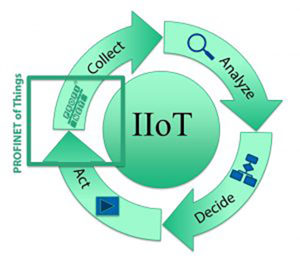Industrial automation continues to evolve along with its supporting networks. The newest trends are more than buzzwords: Industry 4.0 and Industrial Internet of Things. These or similar concepts go by different names in different countries (for example, Smart Industry and China 2025). Here is a brief look back at the evolution followed by the impact and relationship of these new concepts.
In the earliest days of automation, the operator was the automation. He watched a gauge and manually adjusted a valve. He knew when the motor should start and he threw a switch to start it. In process applications, manual operations were succeeded by pneumatic controls using 3-15 psig air. Electronic controls took over from there using 4-20 mA. Logic was accomplished using relays until replaced by Programmable Logic Controllers running relay ladder logic electronically. Serial fieldbuses emerged to replace individual connections to each device (the “bus” in fieldbus). These provided additional information used to configure devices and report potential problems. Finally, Industrial Ethernet took over after fieldbuses to leverage the advances in commercial Ethernet. Industrial Ethernet provides many of the same fieldbuses’ advantages but provides faster updates, larger address spaces, and greater bandwidth.
Industrial Internet of Things (IIoT) is the common denominator for Industry 4.0 and the other national and international programs. This 47-second video shows the relationship:
The main purpose of IIoT is to analyze current industrial processes and determine how to improve them. There are four steps in this process:
- Collect the data
- Analyze the data
- Determine course of action
- Feedback improvements to the process
A subset of the Industrial Internet of Things is PROFINET, the PROFINET of Things. The next lesson begins providing the details of the PROFINET of Things.

